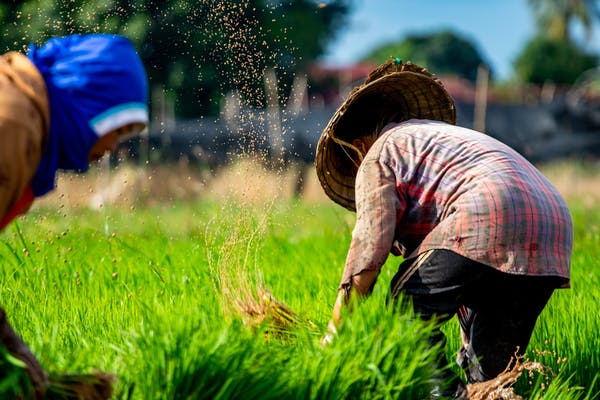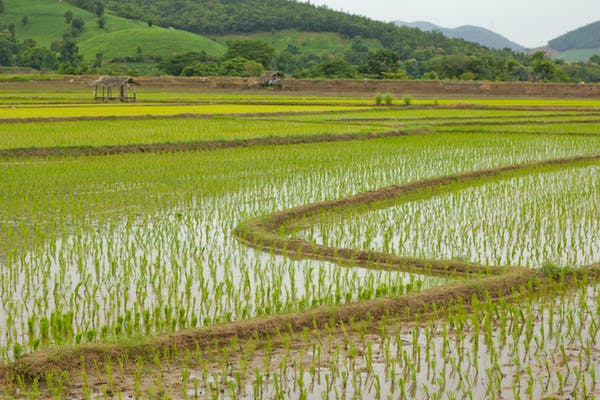Rice’s scientific name is Oryza sativa. Rice is the cereal grass seed. It’s one of the world’s most important dietary carbohydrates in the world. The benefits of eating Kerala rice are very much known to people. More than half of the world’s population relies on it. Rice, which is typically boiled or steamed, can also be ground into gluten-free flour. It’s a staple in many Asian cuisines, including those from India, China, and Southeast Asia.
Rice comes in a variety of shapes (long or short grain) and colours (white or brown). The white rice has been separated from the grain’s fibre-rich outer bran as well as the nutrient-rich germ. As a result, it has a longer shelf life and is easier to cook, but it has a bland, neutral taste and texture; nutritionally, it has less fibre and protein than whole-grain alternatives. Brown rice, on the other hand, contains both the bran and the germ, making it nutrient-and fibre-rich while also maintaining a nutty flavour.

Rice’s nutritional value
Rice is high in carbohydrates, the body’s primary fuel source. Carbohydrates can keep you energised and satisfied, and they are essential for fueling exercise. In particular, brown rice contains high levels of fibre, manganese, selenium, magnesium, and B vitamins. The Dietary Guidelines recommend getting at least half of your grains from whole grains, and brown rice is one of them. However, even white rice contains nutrients. It is a good source of folate. To summarize, rice is an excellent source of nutrients.
Rice is high in carbohydrates, the body’s primary fuel source. Carbohydrates can keep you energised and satisfied, and they are essential for fueling exercise. Brown rice contains fibre, manganese, selenium, magnesium, and B vitamins. The Dietary Guidelines recommend getting at least half of your grains from whole grains, and brown rice is one of them. However, even white rice contains nutrients. It is a good source of folate. Rice is a nutritious food.

A 100g serving of boiled white rice contains 131 kcal/560KJ.
2.8g protein, 0.4g fat, 31.1g carbohydrates, and 0.5g fibre
A 100g serving of boiled brown rice contains: 132Kcal/562KJ
29.2g carbohydrate, 3.6g protein, and 0.9g fat,1.5g fibre, 125mg phosphorus, and 48mg magnesium
What are the five most important health benefits of rice?
1. May aid in maintaining a healthy weight
Brown rice contains fibre and protein, both of which have a satiating effect and contribute to a lower glycemic index (GI) than white rice. This means that the carbs in a serving of brown rice are converted to energy more steadily. As a result, choosing brown rice over white rice helps lower blood glucose and fasting insulin levels. All of these things help to stabilise energy levels, prevent cravings and may aid in weight management.
2. Brown rice helps to prevent chronic disease.
Brown rice retains the bran layer and thus contains flavonoids, which are protective compounds. Apigenin and quercetin are two examples. They play an important role in the prevention of diseases. Numerous studies suggest that eating whole grains, such as brown rice, may reduce the risk of conditions such as heart disease, some cancers, such as pancreatic and gastric cancers, and type 2 diabetes.
3. Glycogen levels are restored after exercise by eating white rice.
Athletes frequently choose white rice as a preferred source of energy, particularly when refuelling after exercise. This is because refined carbohydrates, such as white rice, provide a quick, easily accessible source of carbohydrates, which is required to replenish muscle glycogen after physical exertion.
4. White rice is easy on the stomach.
White rice is easily digestible, low in fibre, and unlikely to cause stomach upset when cooked and served correctly. It may be beneficial for those who suffer from heartburn or nausea, as well as during flare-ups of conditions such as diverticulitis and Crohn’s disease.
5. It’s also a gluten-free grain.
Rice is a great option for people who have coeliac disease or gluten sensitivity because it is naturally gluten-free. The brown, wholegrain variety is especially beneficial because it contains insoluble fibre, which aids digestion and ‘fuels’ the beneficial gut bacteria that are essential for health.
Is rice beneficial for all?
Rice is an important dietary staple, but reports have linked it to arsenic contamination, high levels of which have been linked to an increased risk of heart disease and cancer over time. Arsenic accumulation is greatest in the bran portion of the grain, so wholegrain rice may contain higher levels of this heavy metal contaminant than white rice.

Children are more vulnerable to arsenic poisoning due to their smaller body weight. This risk is heightened by their limited dietary options and the fact that many of their first foods are rice-based. As a result, rice milk, which is made from the bran of the grain, should be avoided by all children under the age of five.
Some useful kitchen tips include washing rice before cooking it and using a large amount of water when cooking rice. However, most people should be fine eating rice in moderation as part of a varied and balanced diet.
Pavizham
We, the Pavizham Group, are constantly working to improve our product. On the other hand, we uphold the highest quality standards for our customers. From sourcing to packaging to shipping, our integrated system ensures that rice arrives at your door fresh and full of goodness. The large purchaser base we currently serve demonstrates our legacy of high-quality products.
We can achieve excellent management at every stage of production with a strict and high-quality assurance system. By securing it beneath the scanner, we can ensure that every grain reaches your plate. Freshly transported high-quality fine grain to the processing sector. Furthermore, we constantly monitor and ensure each grain’s efficiency. such as grain length, broken grain ratio, moisture content, and so on.
